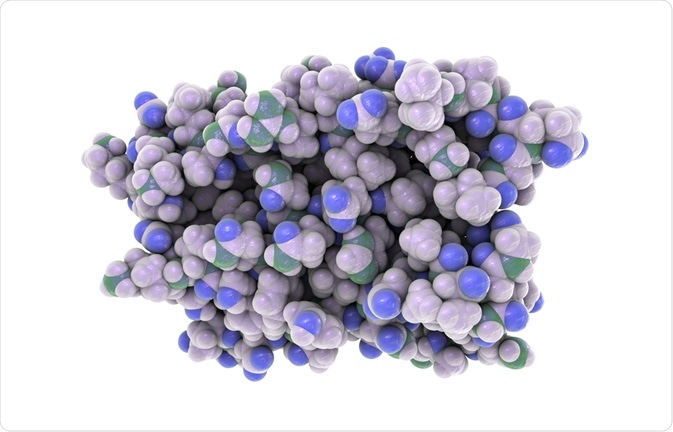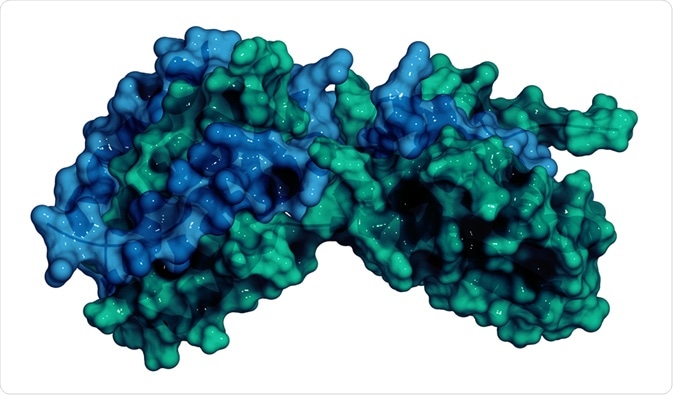Interferons are glycoproteins produced by a wide variety of cells in response to infection. Interleukins are a group of cytokines that play crucial roles in proliferation, activation, maturation, and differentiation of immune cells.

Image Credit: Kateryna Kon/Shutterstock.com
What are interferons?
Interferons (IFNs) are a group of cytokines that were first identified in 1957, where they were found to interfere with a viral infection. IFNs possess several important properties, including antiviral, anticancer, and immunomodulatory properties. Based on primary structures and target receptors, IFNs are categorized into three subtypes: types I, II, and III.
Type I IFNs are further divided into several subtypes, including IFN-α, IFN-β, IFN-ω, IFN-τ, IFN-κ, and IFN-ɛ; whereas, type II IFNs include only one subtype, IFN-γ. Type III IFNs, also known as IFN-λ, are structurally similar to type I IFNs.
After viral entry into cells, pathogen-associated molecular pattern ligands, such as lipopolysaccharides, are recognized by specific cytosolic or endosomal pattern recognition receptors, such as toll-like receptors, which in turn induce the production of IFNs.
After secretion, IFNs bind to specific cell surface IFN receptors on both virus-infected and uninfected cells, and the majority of IFN functions are mediated by the transcriptional regulation of IFN-inducible genes.
What are the functions of IFNs?
IFNs (type I) primarily work as anti-viral cytokines. Almost all types of cells can synthesis IFNs in response to viral infection; however, only specific types of immune cells, such as natural killer cells and CD8+ cytotoxic suppressor cells, can synthesis IFNs in response to mitogenic or other antigenic stimuli. IFN-mediated anti-viral activity requires the induction of certain types of proteins, including RNA-dependent protein kinase.
INFs secreted in response to viral infection can directly stimulate immune cells, or can indirectly increase the recruitment of immune cells at the infection site by inducing chemokine production.
Immunomodulatory functions of IFNs primarily include activation of dendritic cells and T cells, development of B cells, and production of antibodies.
Type II IFNs are primarily produced by innate (natural killer cells, macrophages, etc.) and adaptive (T cells, B cells, Th1 cells, etc.) immune system cells. The main functions of these IFNs include induction of macrophage-mediated elimination of pathogens, promotion of cytotoxic activities, and induction of skin and mucosal epithelial cell apoptosis.
In addition, type II IFNs play essential roles in triggering Th1-mediated immune response and isotype switch of B cells, regulating the expression of class I and class II major histocompatibility complex (MHC) proteins, and modulating antigen presentation.
IFNs in human diseases
In autoimmune disease patients, an elevated type I IFN level has been observed. In such conditions, an interaction between self-nucleic acid and self-antimicrobial molecules leads to activation of toll-like receptors and induction of dendritic cell-mediated production of type I IFNs.
In patients with severe allergies, reduced production of type I IFNs has been observed in response to viral infection. This may be because of the suppressor of cytokine signaling gene-mediated suppression of IFN production.
In eczema patients, type II IFNs is associated with keratinocyte apoptosis.
What are interleukins?
Interleukins (ILs) are a group of cytokines with inflammatory or anti-inflammatory functions. They are essential for proliferation, maturation, migration, activation, and differentiation of immune cells. They work by interacting with high-affinity cell surface receptors.
ILs are produced and secreted by many cell types in response to pathogens or other antigens. They follow a transient expression pattern as mRNAs encoding ILs are very unstable. In response to secreted ILs, cells trigger a series of signaling events, leading to inhibition of cytokine receptors and termination of IL signaling.
The expression of cytokine receptors is increased in response to pathogen/antigen-mediated stimulation of specialized immune cells, such as B cells.
ILs work in both autocrine and paracrine manners. The majority of ILs work on cells that produce them. Also, ILs can work on distant cells by entering the circulatory system.

Image Credit: StudioMolekuul/Shutterstock.com
What are the functions of ILs?
There are many types of ILs with distinct cellular functions. Since the discovery of the first IL (IL-1) in 1977, new members are constantly being added to the IL family.
IL-1, which is secreted by macrophages, fibroblasts, B cells, granular lymphocytes, endothelium, and astrocytes, triggers immune and inflammatory responses by activating lymphocytes and macrophages and increasing the hepatic release of acute-phase proteins.
IL-2, which is secreted by T cells, triggers proliferation and differentiation of B and T cells and synthesis of cytokines and antibodies. T cells also secrete IL-3, which functions as a multilineage colony-stimulating factor.
IL-4, IL-5, IL-6, IL-7 mainly act on B cells and promote the activation and differentiation of B cells and antibody production. Some ILs, such as IL-10, IL-11, and IL-13, inhibit the action of proinflammatory cytokines. In contrast, there are ILs (IL-17, IL-31, and IL-32) that increase the release of proinflammatory cytokines.
Interleukins in human diseases
IL-1 acts as an endogenous pyrogen that stimulates the hypothalamus to induce fever. Experimental inhibition of IL-2 has been shown to cause T cell hyperactivation and T cell-mediated autoimmune responses.
Similarly, inhibition of IL-10 leads to hyperactivation of macrophages and the development of inflammatory bowel disease. In contrast, IL-27 has been shown to suppress autoimmune reactions through its anti-inflammatory effects.
In osteoarthritis patients, IL-29 serves as a biomarker of joint inflammation. In human psoriasis, an increased IL-36 level has been observed.
Last Updated: Oct 8, 2020